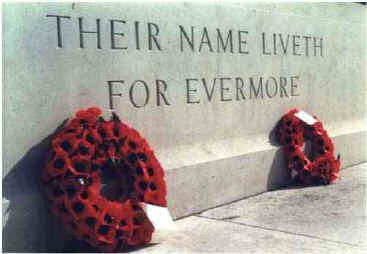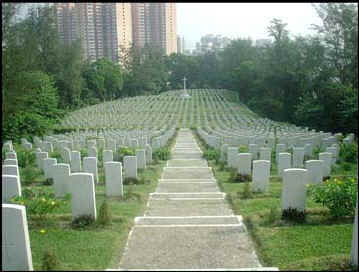 |
| Category: Tributes |

|
This page is a sub
category index |
|
|
|
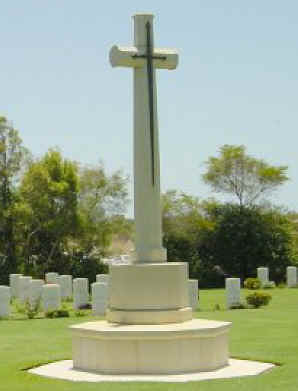 |
The Cross of Sacrifice.
- A typical CWGC cemetery is surrounded by
a masonry wall with wrought iron gates at the entrance.
- In larger sites a
historical notice gives an account of the conflict in which those
commemorated in the cemetery died and the history of the cemetery.
- A
register for the cemetery is also likely to be found within a bronze
register box.
|

Sub category index
|
-
The central focus of
many (most) cemeteries is the Cross of Sacrifice,
(above) designed by
Blomfield to represent the faith of the majority, which ranges in height
between 4.5m and 9m depending on the size of the cemetery.
|
-
Where there are more than 1,000 burials, the cemetery will contain a
Stone
of Remembrance, (below) designed by Lutyens to represent those of all faiths and
none, 3.5m long x 1.5m high with three steps leading up to it.
|
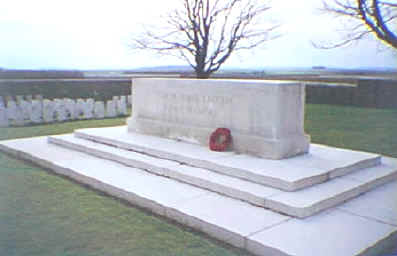
|
|
At the top of each headstone is engraved the national
emblem or the service or regimental badge, followed by the rank, name,
unit, date of death, age and the appropriate religious emblem. At the foot
of the headstone there is, in many cases, an inscription chosen by the
relatives.
|
Headstone of Major
Peter Badcoe VC killed in action with the AATTV in Viet Nam. |
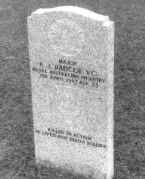 |
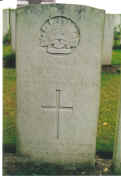
|
Head stone of
Driver H E Jaffa, 1st AIF killed in action 6 September 1918
photo: Yves Fohlen |
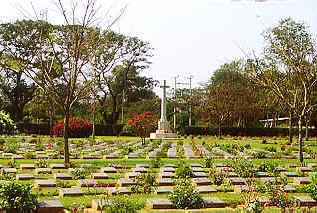 |
- In some cemeteries, notably on the Gallipoli peninsula, in
Macedonia, the Far East and the Pacific, stone or bronze plaques on low
pedestals are used instead of headstones for climatic reasons .
Kanchanaburi
Cemetery |
In cemeteries in areas
where there are a large number of men with no known grave a Memorial is
erected. It is usually round and colonnaded as below. A WW2 example is to
be seen at BOMANA. |
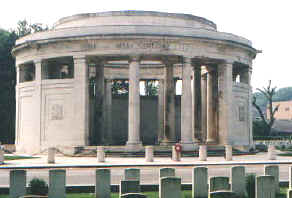 |
The
Ploegsteert Memorial stands in the Berks Cemetery Extension
which is at Ploegsteert just over 12km south of Ieper (Ypres) on the side of the
N365 Ieper to Armentieres road. On the opposite side of the road lies the
Hyde Park Corner Berks Cemetery.
The Memorial is a covered circular colonnade enclosing an open space and
is entered by an opening between two stone lions.
|
|
The names of the dead
are carved in panels set in the walls of the colonnade. It commemorates
over 11,000 men who have no known grave, who fought throughout the war on
Belgian soil beside French troops and died in France or Belgium when the
frontier was of little interest in this area in which trench warfare
lasted longest. The casualties belong to 36 different Divisions. |

|




